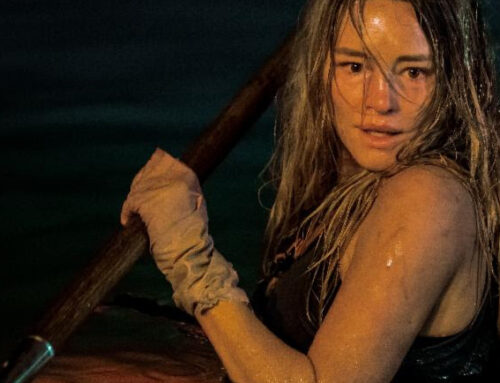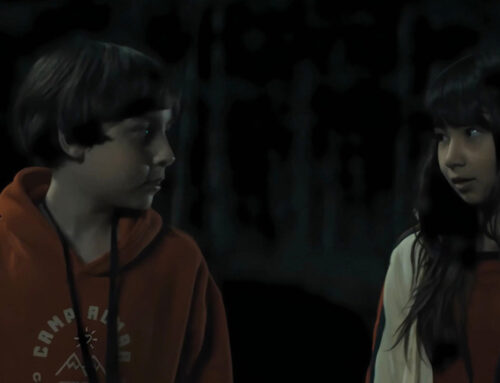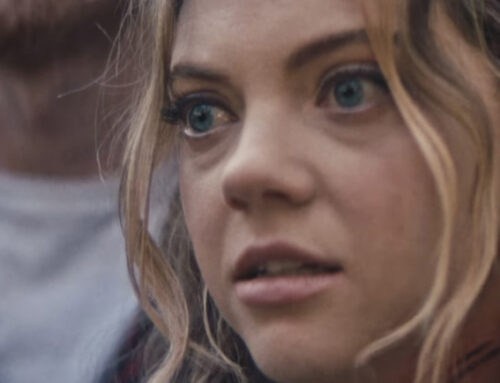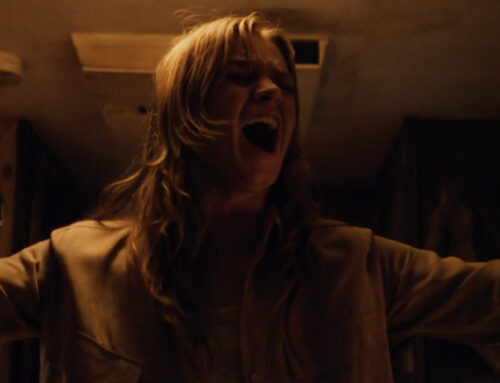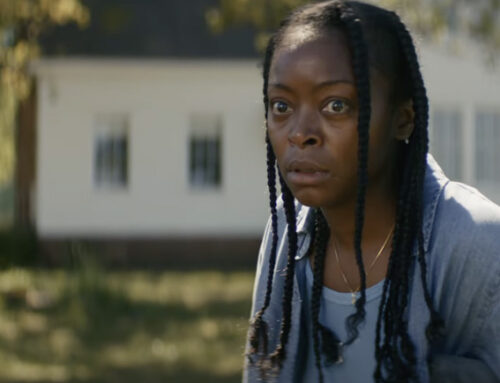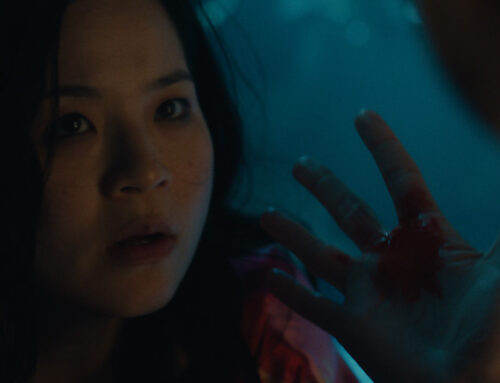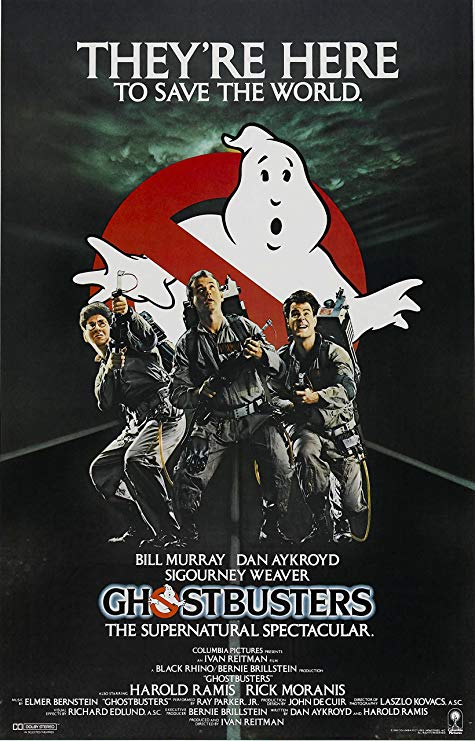
“Who ya gonna call?” This tagline immediately invokes images of green slime, a giant marshmallow man, and a funky ‘80s pop song that answers the question: Ghostbusters! And now, almost forty years after the iconic original debuted, the new hit movie Ghostbusters: Afterlife has proven that the Ghostbusters universe is bigger and better than ever! Ever since the original Ghostbusters premiered in 1984 and forever change the landscape of comedy blockbusters, the movie has permeated every aspect of our culture and entertainment, from hit video-games and animated series to references in other TV series and movies, from merchandise that has spanned every imaginable category to being the top Halloween costume every year. Inspired by Dan Aykroyd’s personal ghostly experiences, his love for the horror comedies of the 1940s/1950s and real parapsychological research, Ghostbusters kick started a paranormal craze that went on to influence an entire age of movies and beyond into every facet of culture.
With the release of Ghostbusters: Afterlife, a sequel to the original two movies and the newest edition to the Ghostbusters legacy, the story continues with the possibility of a whole new generation of ‘busters, appealing to new generations of young fans for the future. Whether the original Ghostbusters, Ghostbusters II (and of course a nod to the all-female re-imagining of Ghostbusters) or Ghostbusters: Afterlife, the wondrous draw of these fun-filled chilling adventures doesn’t just lie with the ridiculously captivating stories or the intriguing characters, but also with a global fascination with the paranormal and all things other-worldly. To truly understand the Ghostbusters phenomenon, one should revisit and highlight the tumultuous journey in its making and explore the original story’s origins and the real-life paranormal world it is inspired by.
Betting on a Lightning Strike
The astronomical mega-success of the original Ghostbusters was by no means a forgone conclusion in the minds of many studio executives and the entertainment industry as a whole, the project facing huge obstacles in every aspect of its development. The original story created by Aykroyd (then titled Ghost Smashers) was a significantly darker story than what was finally produced, with John Belushi in mind as Peter Venkman. Once director Ivan Reitman was attached and Harold Ramis, who not only served as the third Ghostbuster, but also co-wrote the rewrite with Aykroyd, the creative vision and scope for the movie was overhauled. When the financial chairman of Columbia Pictures agreed to an estimated $25 million budget, there was a lot of backlash to face, primarily because such a large budget was unprecedented for a comedy. Ultimately, the powerful combination of Aykroyd, Bill Murray, Reitman, and Ramis overcame any complaints and the project, now titled Ghostbusters, was officially greenlit, though still regarded in the industry as a long-shot. They were given only a year to complete rewrites, cast, shoot, and edit Ghostbusters.
The original critic reviews seemed to reflect that—they were unimpressed and disappointing, with little laughter or positive comments. Michael Ovitz, the representative agent for Aykroyd and Murray at the time, was even told “we all make mistakes.” However, the critics were quickly overruled by fans on opening weekend, breaking Columbia’s “best opening weekend” and “best opening week” records. The film raked in $238.6 million domestically, an additional $53 million overseas, and was the focus of the summer and following Halloween and Christmas seasons that year. The setbacks, obstacles, and disappointments proved worth it in the end, and lightning had indeed struck with Aykroyd’s wild and far-out idea becoming a box office hit.
And while the creative journey of Ghostbusters: Afterlife was by no means as uncertain and tumultuous as the original Ghostbusters, in fact, the project was considered pretty much a sure-thing, it still required a couple of key hurdles to bring it to fruition.
A Young Ghostbuster
Aykroyd grew up in a family surrounded by the supernatural. His great grandfather was a spiritualist who conducted séances and his family studied spirits. His father, the late Peter Aykroyd Sr., had written a book titled, A History of Ghosts, using the family’s experiences as inspiration and his recently passed younger brother, Peter, spent years conducting research into the paranormal. Ghosts and paranormal experiences followed Aykroyd throughout his lifetime—he experienced hauntings in both his childhood home and his Hollywood residence. The original idea for Ghostbusters was actually conceived while Aykroyd was reading an article in the American Society of Psychical Research Journal about quantum physics and parapsychology. He then had the crazy idea of combining the scientific aspect of parapsychology and psychic research with the old horror comedy movies like the 1940’s Abbott and Costello’s Hold that Ghost and 1950’s The Bowery Boys’ Spook Busters and Ghost Chasers.
Aykroyd’s broad and general knowledge of the paranormal and scientific technology made him the go-to paranormal expert on set, often using official (or official-sounding) technology and terminology to provide credibility to the story. Proton packs, nuclear accelerators, psychokinetic energy—all techno-babble that sounded legitimate enough for the average fan to accept, and if it wasn’t, fans were too entertained to care.
Who Ya Gonna Call?
Taking into consideration Aykroyd’s upbringing, its no surprise that he became a huge fan of psychic research and parapsychology, often reading journals and scientific papers on the subject with admiration for the early pioneers in the field, such as Dr. J.B. Rhine and Hans Holzer. Aykroyd’s extensive study brought him to real-life ghostbuster Christopher Chacon. Chacon is a preeminent Parapsychologist and Anomalist and one of the world’s top scientific investigators/researchers of paranormal phenomena. Additionally, Chacon is also one of the world’s leading authorities on ancient supernatural and occult practices, as well as a leading UFOlogist that also has a background as a professional magician/illusionist. In an interview at the 1996 Las Vegas NATPE convention, Aykroyd spoke highly of Chacon: “He has dealt with every type of paranormal phenomena imaginable! He’s been on thousands of cases all over the world and is by far the most experienced investigator out there. If anyone deserves the title of a ‘real Ghostbuster,’ it’s Chacon. He is the ultimate Ghostbuster!”
For nearly forty years Chacon has conducted thousands of scientific investigations into every type of phenomena imaginable in every corner of the world. And because of his strict confidentiality requirements, he receives inquiries dealing with some of the world’s most volatile phenomena requiring the highest level of discretion. His clients are referred through a wide range of contacts: from religious institutions and government agencies to academic and scientific and medical institutions around the world. Aykroyd conveyed, “Many of the cases and research Chacon has done has redefined our understanding of many types of phenomena and with the methods on dealing with them.” I had the privilege of interviewing Chacon, and when I asked how he deals with phenomena, he explained that he uses a “hybrid model that allows me to utilize a variety of investigative methods covering the widest possible spectrum.” Chacon is very diligent with his clients and requires that every subject “go through a variety of examinations and tests including psychological and physiological assessments…background checks…environmental tests…[and] circumstantial and historical-data assessments.” This is all done as a measure to ensure that all explainable, rational, and logical explanations are ruled out. Once completed, Chacon has a variety of complex methods, techniques and procedures in analyzing the phenomena, the subjects involved and any and all other aspects connected to the situation. “Controlled experiments focusing on environment, the subjects, the phenomenon and/or a combination of one or more of these” are selectively performed to detect the presence (or lack thereof) of any paranormal phenomena. Aykroyd’s respect for Chacon and his research inspired him to partner with him on the paranormal TV series PSI FACTOR: Chronicles of the Paranormal. The popular series lasted for 88 episodes and at the time was broadcast in almost every country. When asked what it was like working with Aykroyd and if he had any influence on the field of paranormal research, Chacon replied, “He (Aykroyd) is brilliant to work with! And is undoubtedly responsible for reviving some of the enthusiasm for parapsychology and exploration of all paranormal phenomena!”
I Ain’t Afraid of No Ghost

Photo Courtesy Jessica Winarski
While today’s few real-ghostbusters, like Chacon, continue the majority of their research and investigations for the most part behind closed doors and away from inquisitive fans that are hungry for the paranormal, there is an abundance of entertainment content that continues to be available to quench appetites. One could even argue that since the 1980’s, Ghostbusters is responsible for the overall resurging fascination in the paranormal and the continuing popularity in TV and movies; the current Netflix hit TV series, Stranger Things, paying tribute of sorts to Ghostbusters by making references throughout the series, even in one episode having the main character’s adorned in Ghostbusters attire. Reality and documentary TV series have also taken advantage of the popularity for the paranormal with a whole slough of programming. However, unlike the credible documentary TV shows of the 1980’s/1990’s, including Unsolved Mysteries and Sightings, the reality and alternative TV shows of today have little-to-no scientific credibility and are taken with a grain-of-salt, but this should be no surprise to anyone as the majority of TV shows today are first and foremost meant to entertain and amuse, much like their scripted dramatic counterparts.
Whether it is a heart-warming clever comedy like Ghostbusters: Afterlife or just another terrifying supernatural horror film; the ever-growing demand and fascination for the paranormal is insatiable in whatever form it takes. It is this tremendous fascination with the paranormal that made the original Ghostbusters additionally appealing, as is with Ghostbusters: Afterlife, as well as every movie and TV series that delves into this eerie and often otherworldly domain. As it turns out, a significant percentage of this fascination is connected to beliefs in the paranormal and actual experiences. Several polls and surveys taken around the world showed that the majority of people believe in a variety of paranormal phenomena. For example, a 2021 YouGov survey in the U.S. found that more than two in five (41%) Americans believe in ghosts, with an even larger percentage (43%) believing in demons, and 31% believing that “other supernatural beings” exist. These percentages are much greater in other parts of the world, especially eastern countries. As Chacon explained, “for the majority of the world, belief in the paranormal or supernatural/occult phenomena is intrinsic with their culture, religion or upbringing; there is no question whether these phenomena exist and also serve to remind them that there is still so much in our universe we don’t understand.” Chacon went on to explain that since the prehistoric days of cave drawings, storytelling has been an integral part of the human experience, be it factual or fictional. And without any doubt, among those stories that have stood the test of time deal with ghosts, sea monsters, encounters with dark demonic forces and other such extraordinary phenomena. Chacon points out that it is an intrinsic human quality to tell stories and how movies and TV are one of our most popular ways of doing so. These are stories that “have enthralled since before biblical times…they allow you to escape this world for a brief time and journey to a place that empowers your imagination to run wild…whether the story is fun and thought-provoking or terrifyingly heart-pounding,” he continues. With this explanation in mind, it is easy to recognize that stories, movies and TV shows about the paranormal will continue to intrigue, delight, and thrill people for decades, if not centuries, to come.
Taking into consideration the scientific controls and procedures that goes into Chacon’s investigations and research one wouldn’t think there be much in common with the rollicking ‘guns-blazing’ in either Ghostbusters or Ghostbusters: Afterlife. But I found an eye-opening similarity and it involves technology and the application of physics. While all the Ghostbusters movies utilized fictional theoretical “P.K.E. meters” and “particle accelerators” to analyze and trap entities and ghosts, amongst the vast array of real state-of-the-art technology Chacon utilizes, some involves the application of next-generation technology to analyze, document and even experiment on phenomena. And yes, some involves nuclear and high-energy field applications like the proton-packs of Ghostbusters, though obviously not so sleek and functionally specific to “ghosts, spirits and entities”. Aykroyd points out, “Chacon uses the ultimate scientific methods and the most advanced technology, including next-gen and prototype tech.”
Ghostbusters: Afterlife
As soon as the movie was officially announced, expectations were high for the release of Ghostbusters: Afterlife. As a result of the multiple delays to release the movie due to the pandemic, anticipation and excitement only grew exponentially. Fortunately, the movie has more than lived up to the expectations of long-time fans and captured the imaginations of a whole new generation.
A sequel to the first two Ghostbusters movies, Ghostbusters: Afterlife is directed by Jason Reitman, son of Ivan Reitman (director of the original movie), as well as written by Jason and Gil Kenan. Paul Rudd, Finn Wolfhard, McKenna Grace and Carrie Coon head the amazing cast along with original stars Dan Aykroyd, Bill Murray, Ernie Hudson, Annie Potts and Sigourney Weaver. In addition to the new cast of faces, the setting for this story couldn’t be more different and far from the hustle and bustle of New York City. But the appeal of the small town country setting also comes with an unsettling and eerie spookiness once things go sideways, akin to Gremlins. The journey taken by the young characters in this movie allows the audience to get a fresh and unique perspective of these extraordinary phenomena; their very likable personalities coming to grips with jaw-dropping paranormal events recaptures the charm that the original did, though a little differently, even offering a more compelling story for fans.
The biggest dilemma of doing a sequel to the Ghostbusters franchise is the absence of Harold Ramis, who masterfully played the lovable and brilliant Dr. Egon Spengler. With Ramis’ passing, any sequel stories that exclude Ramis’ character would have been considered improbable if not unconscionable, especially to the loyal fans of the franchise. However, Reitman and Kenan created a brilliant narrative that chose to address his absence directly and in-fact made the passing of Dr. Egon Spengler (Ramis) a pivotal aspect of the story, if not the heart of it. In that respect, the story addresses the loss of Spengler that turns out to be a significant theme and through-line; that nothing ever really dies, which applies not only to Spengler, but to the nefarious entities they must battle; to say that the past is coming back to haunt them, is an understatement. But Ghostbusters: Afterlife is about so much more than just battling dark supernatural forces; it’s about family, finding forgiveness, a nerdy teenage girl finding herself, reconnecting and dealing with change.
In Ghostbusters: Afterlife, I can safely say that lightning has indeed struck again with a magical mixture of heart-warming characters and tone, and the perfect combination of scares and laughs, and a uniquely compelling story. The movie comes across fresh and unique, while keeping true to the characters’ themselves and their back-story; a combination that has breathed new life into the franchise. Ernie Hudson credits the original film’s success to friendship. “It’s about regular people making a difference dealing with fears that we all have. Fears about what’s beyond the five senses, who’s in the closet when the lights go out, and they bravely deal with it.” The cohesive friendship and teamwork that the original Ghostbusters displayed so well. Many critics agree that the 2016 all-female reboot relied too heavily on the comedic background of the actresses, leaving their actual characters and relationships, stale, incomplete and awkward. This, plus the over reliance on special effects and a derivative predictable story (basically retelling the story of the original), offered moviegoers nothing truly original beyond the gender flip; which some regarded as a gimmick and did not do justice to the brilliant comedic actors or the Ghostbusters legacy.
Ghostbusters Forever
What they have successfully accomplished with Ghostbusters: Afterlife is a brilliant movie that will please the loyal fans of the original, while creating something that will entrance new audiences. And having accomplished the ideal new launch of the franchise, the possibilities for the future are limitless! Reportedly, the late Harold Ramis had previously stated that he would like the Ghostbuster story to go international. If that is the case, they would have plenty to work with, with every culture having their own spiritual and supernatural beliefs: from the Banshees of Ireland to China’s Jiang Shi or Hopping Corpse; a global Ghostbusters would appeal to an international audience even more so than they already do, if that is possible! And there is still so much more about ghosts and the paranormal over-all that we don’t know which can fuel the imaginations of the creators with more unlimited possibilities. Even after his lifetime of thousands of investigations around the world, dealing with every phenomena imaginable, Chacon conveys how there is still very much we don’t understand and have yet to explore. “I have discovered that many of the most common and prolific types of phenomena do not actually abide by many of the long-held beliefs and preconceptions. The majority of traditional perspectives and theories on phenomena are seemingly inaccurate, fallacies and misconceptions. I also continue to encounter previously unknown types of phenomena that completely redefine our understanding and challenge our ability to comprehend them.” Chacon points out if such great stories were created in the first Ghostbusters and in Ghostbusters: Afterlife using only the conventional thinking about these phenomena, one can only imagine the unlimited story possibilities that any future sequels hold.
Ghostbusters: Afterlife is the perfect sequel at the perfect time to take the Ghostbusters legacy and franchise into the future! And I for one, cannot wait to see what fascinating spooky adventures lie ahead—because I ain’t afraid of no ghosts!




